PostgreSQL源码分析 —— FunctionScan
本文分析一下FunctionScan的源码,加深一下理解。以SELECT * FROM generate_series(2,4);为例进行分析。
postgres@postgres=# SELECT * FROM generate_series(2,4);generate_series
-----------------234
(3 rows)postgres@postgres=# explain SELECT * FROM generate_series(2,4);QUERY PLAN
--------------------------------------------------------------------Function Scan on generate_series (cost=0.00..0.03 rows=3 width=4)
(1 row)
查询优化器
解析层面流程如下:
exec_simple_query
--> pg_parse_query--> raw_parser--> base_yyparse
--> pg_analyze_and_rewrite
语法表示可查看gram.y中的定义。
simple_select:SELECT opt_all_clause opt_target_listinto_clause from_clause where_clausegroup_clause having_clause window_clause{SelectStmt *n = makeNode(SelectStmt);n->targetList = $3;n->intoClause = $4;n->fromClause = $5;n->whereClause = $6;n->groupClause = ($7)->list;n->havingClause = $8;n->windowClause = $9;$$ = (Node *)n;}
from_clause:FROM from_list { $$ = $2; }| /*EMPTY*/ { $$ = NIL; };from_list:table_ref { $$ = list_make1($1); }| from_list ',' table_ref { $$ = lappend($1, $3); };table_ref: relation_expr opt_alias_clause{$1->alias = $2;$$ = (Node *) $1;}| func_table func_alias_clause{RangeFunction *n = (RangeFunction *) $1;n->alias = linitial($2);n->coldeflist = lsecond($2);$$ = (Node *) n;}
/** func_table represents a function invocation in a FROM list. It can be* a plain function call, like "foo(...)", or a ROWS FROM expression with* one or more function calls, "ROWS FROM (foo(...), bar(...))",* optionally with WITH ORDINALITY attached.* In the ROWS FROM syntax, a column definition list can be given for each* function, for example:* ROWS FROM (foo() AS (foo_res_a text, foo_res_b text),* bar() AS (bar_res_a text, bar_res_b text))* It's also possible to attach a column definition list to the RangeFunction* as a whole, but that's handled by the table_ref production.*/
func_table: func_expr_windowless opt_ordinality{RangeFunction *n = makeNode(RangeFunction);n->lateral = false;n->ordinality = $2;n->is_rowsfrom = false;n->functions = list_make1(list_make2($1, NIL));/* alias and coldeflist are set by table_ref production */$$ = (Node *) n;}| ROWS FROM '(' rowsfrom_list ')' opt_ordinality{RangeFunction *n = makeNode(RangeFunction);n->lateral = false;n->ordinality = $6;n->is_rowsfrom = true;n->functions = $4;/* alias and coldeflist are set by table_ref production */$$ = (Node *) n;};func_expr_windowless:func_application { $$ = $1; }| func_expr_common_subexpr { $$ = $1; };func_application: func_name '(' ')'{$$ = (Node *) makeFuncCall($1, NIL, @1);}| func_name '(' func_arg_list opt_sort_clause ')'{FuncCall *n = makeFuncCall($1, $3, @1);n->agg_order = $4;$$ = (Node *)n;}
关键数据结构:
// select语句的抽象语法树表示
typedef struct SelectStmt
{NodeTag type;// 对应select *List *targetList; /* the target list (of ResTarget) */ // *// 对应 from generate_series(2,4)List *fromClause; /* the FROM clause */ // 保存RangeFunction节点// ...... } SelectStmt;// 范围表:函数类型范围表
/** RangeFunction - function call appearing in a FROM clause*/
typedef struct RangeFunction
{NodeTag type;bool lateral; /* does it have LATERAL prefix? */bool ordinality; /* does it have WITH ORDINALITY suffix? */bool is_rowsfrom; /* is result of ROWS FROM() syntax? */List *functions; /* per-function information, see above */Alias *alias; /* table alias & optional column aliases */List *coldeflist; /* list of ColumnDef nodes to describe result of function returning RECORD */
} RangeFunction;// 函数调用 ,函数名,参数列表
typedef struct FuncCall
{NodeTag type;List *funcname; /* qualified name of function */List *args; /* the arguments (list of exprs) */List *agg_order; /* ORDER BY (list of SortBy) */Node *agg_filter; /* FILTER clause, if any */bool agg_within_group; /* ORDER BY appeared in WITHIN GROUP */bool agg_star; /* argument was really '*' */bool agg_distinct; /* arguments were labeled DISTINCT */bool func_variadic; /* last argument was labeled VARIADIC */struct WindowDef *over; /* OVER clause, if any */int location; /* token location, or -1 if unknown */
} FuncCall;
语义分析流程:
pg_analyze_and_rewrite
--> pg_analyze--> transformStmt--> transformSelectStmt--> transformFromClause // 处理Function范围表--> transformFromClauseItem--> transformRangeFunction--> transformExpr--> transformFuncCall--> ParseFuncOrColumn // 构造FuncExpr--> addRangeTableEntryForFunction--> get_expr_result_type--> internal_get_result_type--> build_function_result_tupdesc_t--> get_type_func_class--> buildRelationAliases--> buildNSItemFromTupleDesc--> transformTargetList
--> pg_rewrite_query
关键数据结构:
/* FuncExpr - expression node for a function call*/
typedef struct FuncExpr
{Expr xpr;Oid funcid; /* PG_PROC OID of the function */Oid funcresulttype; /* PG_TYPE OID of result value */bool funcretset; /* true if function returns set */bool funcvariadic; /* true if variadic arguments have been* combined into an array last argument */CoercionForm funcformat; /* how to display this function call */Oid funccollid; /* OID of collation of result */Oid inputcollid; /* OID of collation that function should use */List *args; /* arguments to the function */int location; /* token location, or -1 if unknown */
} FuncExpr;/** RangeTblFunction -* RangeTblEntry subsidiary data for one function in a FUNCTION RTE.*/
typedef struct RangeTblFunction
{NodeTag type;Node *funcexpr; /* expression tree for func call */int funccolcount; /* number of columns it contributes to RTE *//* These fields record the contents of a column definition list, if any: */List *funccolnames; /* column names (list of String) */List *funccoltypes; /* OID list of column type OIDs */List *funccoltypmods; /* integer list of column typmods */List *funccolcollations; /* OID list of column collation OIDs *//* This is set during planning for use by the executor: */Bitmapset *funcparams; /* PARAM_EXEC Param IDs affecting this func */
} RangeTblFunction;
最终生成查询树Query,下一步是生成执行计划。
优化器主流程:
pg_plan_queries
--> pg_plan_query--> planner--> standard_planner 调用标准优化器
standard_planner
--> subquery_planner--> preprocess_function_rtes--> pull_up_subqueries // 上拉子查询--> grouping_planner--> query_planner--> setup_simple_rel_arrays--> add_base_rels_to_query // 构造RelOptInfo--> build_simple_rel--> make_one_rel--> set_base_rel_sizes--> set_rel_size--> set_function_size_estimates--> set_baserel_size_estimates--> set_base_rel_pathlists--> set_rel_pathlist--> set_function_pathlist--> create_functionscan_path // 生成FunctionScanPath--> make_rel_from_joinlist--> apply_scanjoin_target_to_paths
--> create_plan--> create_scan_plan--> create_functionscan_plan--> make_functionscan
核心函数:
FunctionScan *create_functionscan_plan(PlannerInfo *root, Path *best_path, List *tlist, List *scan_clauses)
{FunctionScan *scan_plan;Index scan_relid = best_path->parent->relid;RangeTblEntry *rte;List *functions;rte = planner_rt_fetch(scan_relid, root);functions = rte->functions; // 函数表达式 /* Sort clauses into best execution order */scan_clauses = order_qual_clauses(root, scan_clauses);/* Reduce RestrictInfo list to bare expressions; ignore pseudoconstants */scan_clauses = extract_actual_clauses(scan_clauses, false);/* Replace any outer-relation variables with nestloop params */if (best_path->param_info){scan_clauses = (List *)replace_nestloop_params(root, (Node *) scan_clauses);/* The function expressions could contain nestloop params, too */functions = (List *) replace_nestloop_params(root, (Node *) functions);}scan_plan = make_functionscan(tlist, scan_clauses, scan_relid, functions, rte->funcordinality);copy_generic_path_info(&scan_plan->scan.plan, best_path);return scan_plan;
}
执行器
生成执行计划后,进入执行器。
主流程如下:
PortalStart
--> ExecutorStart--> InitPlan--> ExecInitFunctionScan--> ExecInitTableFunctionResult--> get_expr_result_type--> ExecInitScanTupleSlot--> ExecInitResultTypeTL--> ExecTypeFromTL--> ExecAssignScanProjectionInfo
PortalRun
--> ExecutorRun--> ExecutePlan--> ExecFunctionScan--> ExecScan--> ExecScanFetch--> FunctionNext // 首先获取函数的结果集保存起来--> ExecMakeTableFunctionResult--> FunctionCallInvoke--> generate_series_int4--> generate_series_step_int4--> tuplestore_gettupleslot // 第一次执行获得结果集后,每次从tuplestore中取出
PortalDrop
核心代码:
/* ----------------------------------------------------------------* ExecFunctionScan(node)** Scans the function sequentially and returns the next qualifying* tuple.* We call the ExecScan() routine and pass it the appropriate* access method functions.* ----------------------------------------------------------------*/
TupleTableSlot *ExecFunctionScan(PlanState *pstate)
{FunctionScanState *node = castNode(FunctionScanState, pstate);return ExecScan(&node->ss,(ExecScanAccessMtd) FunctionNext,(ExecScanRecheckMtd) FunctionRecheck);
}TupleTableSlot *
ExecScan(ScanState *node,ExecScanAccessMtd accessMtd, /* function returning a tuple */ExecScanRecheckMtd recheckMtd)
{ExprContext *econtext;ExprState *qual;ProjectionInfo *projInfo;/* Fetch data from node */qual = node->ps.qual;projInfo = node->ps.ps_ProjInfo;econtext = node->ps.ps_ExprContext;/* interrupt checks are in ExecScanFetch *//* If we have neither a qual to check nor a projection to do, just skip* all the overhead and return the raw scan tuple.*/if (!qual && !projInfo){ResetExprContext(econtext);return ExecScanFetch(node, accessMtd, recheckMtd);}/* Reset per-tuple memory context to free any expression evaluation* storage allocated in the previous tuple cycle.*/ResetExprContext(econtext);/* get a tuple from the access method. Loop until we obtain a tuple that* passes the qualification.*/for (;;){TupleTableSlot *slot;slot = ExecScanFetch(node, accessMtd, recheckMtd);// ......}
}/** ExecScanFetch -- check interrupts & fetch next potential tuple** This routine is concerned with substituting a test tuple if we are* inside an EvalPlanQual recheck. If we aren't, just execute* the access method's next-tuple routine. */
TupleTableSlot *
ExecScanFetch(ScanState *node,ExecScanAccessMtd accessMtd,ExecScanRecheckMtd recheckMtd)
{EState *estate = node->ps.state;CHECK_FOR_INTERRUPTS();if (estate->es_epq_active != NULL){// ......}/* Run the node-type-specific access method function to get the next tuple */return (*accessMtd) (node);
}/* ----------------------------------------------------------------* FunctionNext** This is a workhorse for ExecFunctionScan* ---------------------------------------------------------------- */
TupleTableSlot *FunctionNext(FunctionScanState *node)
{EState *estate;ScanDirection direction;TupleTableSlot *scanslot;bool alldone;int64 oldpos;int funcno;int att;/* get information from the estate and scan state */estate = node->ss.ps.state;direction = estate->es_direction;scanslot = node->ss.ss_ScanTupleSlot;if (node->simple){/* Fast path for the trivial case: the function return type and scan* result type are the same, so we fetch the function result straight* into the scan result slot. No need to update ordinality or rowcounts either. */Tuplestorestate *tstore = node->funcstates[0].tstore;/** If first time through, read all tuples from function and put them* in a tuplestore. Subsequent calls just fetch tuples from* tuplestore.*/if (tstore == NULL){node->funcstates[0].tstore = tstore =ExecMakeTableFunctionResult(node->funcstates[0].setexpr,node->ss.ps.ps_ExprContext,node->argcontext,node->funcstates[0].tupdesc,node->eflags & EXEC_FLAG_BACKWARD);/** paranoia - cope if the function, which may have constructed the* tuplestore itself, didn't leave it pointing at the start. This* call is fast, so the overhead shouldn't be an issue.*/tuplestore_rescan(tstore);}/* Get the next tuple from tuplestore. */(void) tuplestore_gettupleslot(tstore,ScanDirectionIsForward(direction),false,scanslot);return scanslot;}/** Increment or decrement ordinal counter before checking for end-of-data,* so that we can move off either end of the result by 1 (and no more than* 1) without losing correct count. See PortalRunSelect for why we can* assume that we won't be called repeatedly in the end-of-data state.*/oldpos = node->ordinal;if (ScanDirectionIsForward(direction))node->ordinal++;elsenode->ordinal--;/** Main loop over functions.** We fetch the function results into func_slots (which match the function* return types), and then copy the values to scanslot (which matches the* scan result type), setting the ordinal column (if any) as well.*/ExecClearTuple(scanslot);att = 0;alldone = true;for (funcno = 0; funcno < node->nfuncs; funcno++){FunctionScanPerFuncState *fs = &node->funcstates[funcno];int i;/** If first time through, read all tuples from function and put them* in a tuplestore. Subsequent calls just fetch tuples from* tuplestore.*/if (fs->tstore == NULL){fs->tstore =ExecMakeTableFunctionResult(fs->setexpr,node->ss.ps.ps_ExprContext,node->argcontext,fs->tupdesc,node->eflags & EXEC_FLAG_BACKWARD);/** paranoia - cope if the function, which may have constructed the* tuplestore itself, didn't leave it pointing at the start. This* call is fast, so the overhead shouldn't be an issue.*/tuplestore_rescan(fs->tstore);}/** Get the next tuple from tuplestore.** If we have a rowcount for the function, and we know the previous* read position was out of bounds, don't try the read. This allows* backward scan to work when there are mixed row counts present.*/if (fs->rowcount != -1 && fs->rowcount < oldpos)ExecClearTuple(fs->func_slot);else(void) tuplestore_gettupleslot(fs->tstore,ScanDirectionIsForward(direction),false,fs->func_slot);if (TupIsNull(fs->func_slot)){/** If we ran out of data for this function in the forward* direction then we now know how many rows it returned. We need* to know this in order to handle backwards scans. The row count* we store is actually 1+ the actual number, because we have to* position the tuplestore 1 off its end sometimes.*/if (ScanDirectionIsForward(direction) && fs->rowcount == -1)fs->rowcount = node->ordinal;/** populate the result cols with nulls*/for (i = 0; i < fs->colcount; i++){scanslot->tts_values[att] = (Datum) 0;scanslot->tts_isnull[att] = true;att++;}}else{/** we have a result, so just copy it to the result cols.*/slot_getallattrs(fs->func_slot);for (i = 0; i < fs->colcount; i++){scanslot->tts_values[att] = fs->func_slot->tts_values[i];scanslot->tts_isnull[att] = fs->func_slot->tts_isnull[i];att++;}/** We're not done until every function result is exhausted; we pad* the shorter results with nulls until then.*/alldone = false;}}/** ordinal col is always last, per spec.*/if (node->ordinality){scanslot->tts_values[att] = Int64GetDatumFast(node->ordinal);scanslot->tts_isnull[att] = false;}/** If alldone, we just return the previously-cleared scanslot. Otherwise,* finish creating the virtual tuple.*/if (!alldone)ExecStoreVirtualTuple(scanslot);return scanslot;
}
相关文章:

PostgreSQL源码分析 —— FunctionScan
本文分析一下FunctionScan的源码,加深一下理解。以SELECT * FROM generate_series(2,4);为例进行分析。 postgrespostgres# SELECT * FROM generate_series(2,4);generate_series -----------------234 (3 rows)postgrespostgres# explain SELECT * FROM generate…...

数据结构-十大排序算法集合(四万字精讲集合)
前言 1,数据结构排序篇章是一个大的工程,这里是一个总结篇章,配备动图和过程详解,从难到易逐步解析。 2,这里我们详细分析几个具备教学意义和实际使用意义的排序: 冒泡排序,选择排序,…...
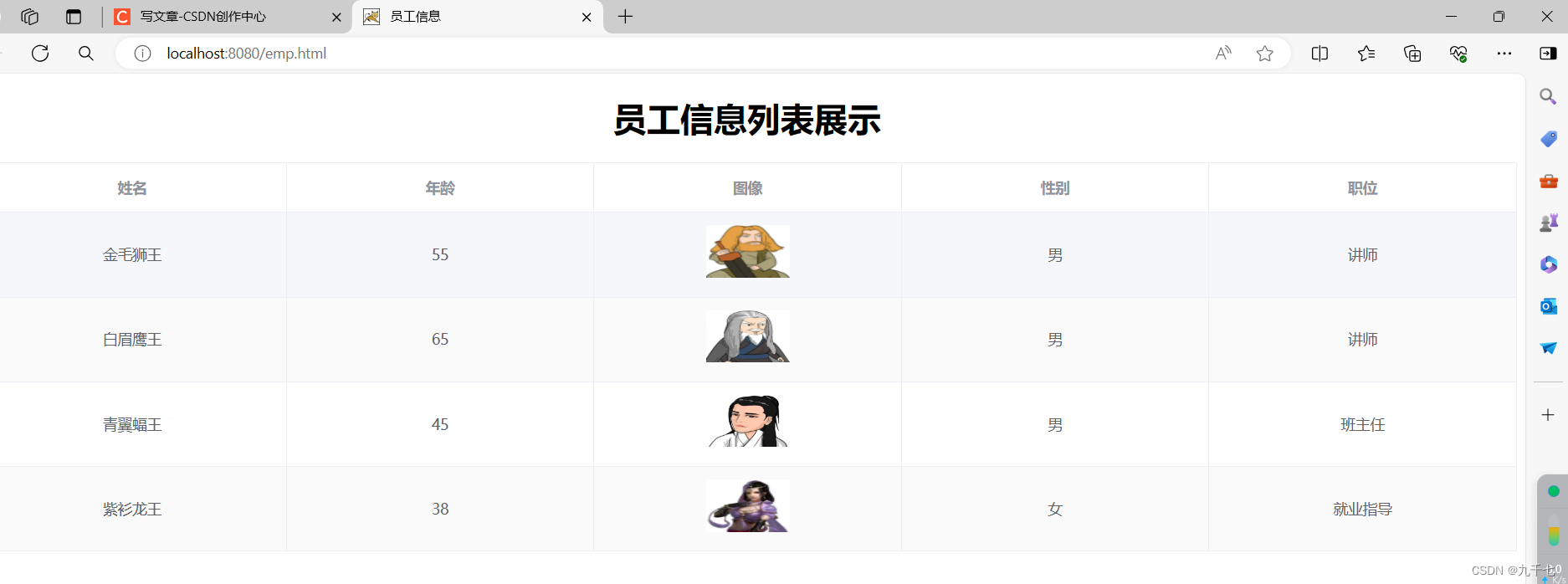
SpringBoot三层架构
目录 一、传统方式 二、三层架构 三、代码拆分 1、dao层 2、service层 3、control层 四、运行结果 一、传统方式 上述代码存在一定的弊端,在进行软件设计和软件开发中提倡单一责任原则,使代码的可读性更强,复杂性更低,可扩展性…...

uniapp微信小程序局部刷新,无感刷新,修改哪条数据刷新哪条
uniapp做微信小程序时,一个商品列表滑到几百条数据时,点进去详情跳转去编辑信息上下架等,修改完成回来商品列表就到第一条数据了,这样页面效果体验感不是很好,是因为我们把数据接口放在onshow中了,每次回来…...

golan的雪花id
今天记录一下 golang的雪花id golang的雪花id 还是比较简单的,其包含的含义以及组成我这就不讲了,好多大佬都有文章写过,我直接上怎么用 先 引入包 go get "github.com/bwmarrin/snowflake" 代码块 func main() {// 设置一个时…...

RK3568 CAN波特率500K接收数据导致CPU4满载
最近调试RK3568 CAN时发现,当CAN作为接收端,在快速接收数据时会导致cpu4满载。down掉can口或者断开外设时恢复正常。并且问题只是在部门CPU版本上出现。在CAN接收中断中打印log,能发现log是按照接收数据的时间打印的。 驱动(rockchip_canfd…...

AI实战 | 使用元器打造浪漫仪式小管家
浪漫仪式小管家 以前我们曾经打造过学习助手和待办助手,但这一次,我们决定创造一个与众不同的智能体,而浪漫将成为我们的主题。我们选择浪漫作为主题,是因为我们感到在之前的打造过程中缺乏了一些仪式感,无法给对方带来真正的惊喜。因此,这一次我们计划慢慢调试,将它发…...
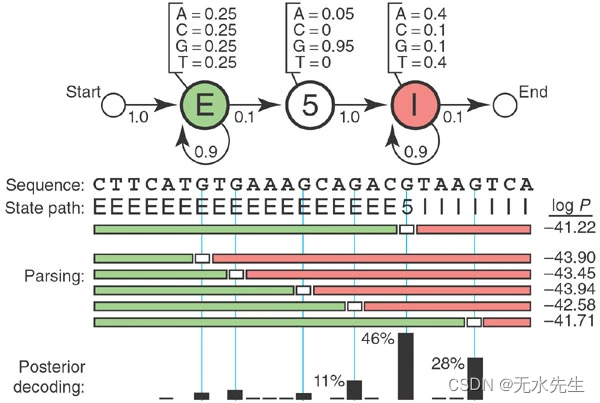
什么是隐马尔可夫模型?
文章目录 一、说明二、玩具HMM:5′拼接位点识别三、那么,隐藏了什么?四、查找最佳状态路径五、超越最佳得分对齐六、制作更逼真的模型七、收获 关键词:hidden markov model 一、说明 被称为隐马尔可夫模型的统计模型是计算生物学…...

qt中使用qsqlite连接数据库,却没有在本地文件夹中生成db文件
exe运行起来之后,发现没有在exe文件夹下生成数据库文件,,之前可以,但中间莫名其妙不行了,代码如下 // 建立和SQlite数据库的连接database QSqlDatabase::addDatabase("QSQLITE");// 设置数据库文件的名字da…...

Django的‘通用视图TemplateView’
使用通用视图的好处是:如果有一个html需要展示,不需要写view视图函数,直接写好url即可。 使用通用视图的步骤如下: 1、编辑项目urls.py文件 from django.views.generic import TemplateView 在该文件的映射表中添加:…...

java功能实现在某个时间范围之内输出true,不在某个范围输出false,时间精确到分钟
import org.slf4j.Logger; import org.slf4j.LoggerFactory; public class DateTimeChecker { private static final Logger log LoggerFactory.getLogger(DateTimeChecker.class); /** * 检查当前时间是否在指定的小时和分钟范围内。 * * param startHour 开…...
macbook屏幕录制技巧,这2个方法请你收好
在当今数字化时代,屏幕录制成为了一项不可或缺的技能,无论是教学演示、游戏直播,还是软件操作教程,屏幕录制都能帮助我们更直观地传达信息。MacBook作为苹果公司的标志性产品,其屏幕录制功能也备受用户关注。本文将详细…...

vue-loader
Vue Loader 是一个 webpack 的 loader,它允许你以一种名为单文件组件 (SFCs)的格式撰写 Vue 组件 起步 安装 npm install vue --save npm install webpack webpack-cli style-loader css-loader html-webpack-plugin vue-loader vue-template-compiler webpack…...

IO系列(十) -TCP 滑动窗口原理介绍(上)
一、摘要 之前在上分享网络编程知识文章的时候,有网友写下一条留言:“可以写写一篇关于 TCP 滑动窗口原理的文章吗?”。 当时没有立即回复,经过查询多方资料,发现这个 TCP 真的非常非常的复杂,就像一个清…...

IPython 使用技巧整理
IPython 是一个增强的 Python 交互式 shell,提供了许多实用的功能和特性,使得 Python 编程和数据科学工作变得更加便捷和高效。以下是一些 IPython 的使用技巧整理: 1. 自动补全和查询 Tab 补全:在 IPython 中,你可以…...

Python 引入中文py文件
目录 背景 思路 importlib介绍 使用方法 1.导入内置库 importlib.util 2.创建模块规格对象 spec importlib.util.spec_from_file_location("example_module", "example.py") 3.创建模块对象 module importlib.util.module_from_spec(spec) …...
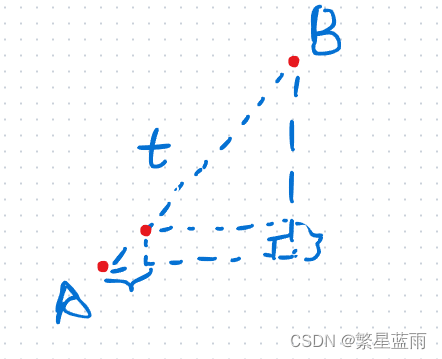
qt 实现模拟实际物体带速度的移动(水平、垂直、斜角度)——————附带完整代码
文章目录 0 效果1 原理1.1 图片旋转1.2 物体按照现实中的实际距离带真实速度移动 2 完整实现2.1 将车辆按钮封装为一个类:2.2 调用方法 3 完整代码参考 0 效果 实现后的效果如下 可以显示属性(继承自QToolButton): 鼠标悬浮显示文字 按钮…...
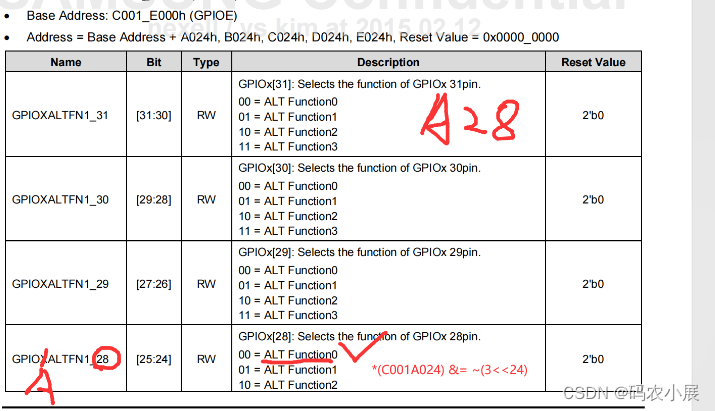
驱动开发(三):内核层控制硬件层
驱动开发系列文章: 驱动开发(一):驱动代码的基本框架 驱动开发(二):创建字符设备驱动 驱动开发(三):内核层控制硬件层 ←本文 目录…...

企业邮箱大附件无法上传?无法确认接收状态?这样解决就行
Outlook邮箱作为最常用的邮箱系统,被全世界企业采用作为内部通用沟通方式,但Outlook邮箱却有着明显的使用缺陷,如邮箱大附件上传障碍及附件接收无提示等。 1、企业邮箱大附件无法上传 Outlook企业邮箱大附件的上传上限一般是50M,…...
)
Kotlin 数据类(Data Class)
Kotlin 数据类(Data Class)是一种特别用于持有数据的类。它们简化了数据类的创建,并提供了一些自动生成的方法。下面详细介绍 Kotlin 数据类的原理和使用方法。 数据类的定义 Kotlin 中的数据类使用 data 关键字定义。例如: da…...
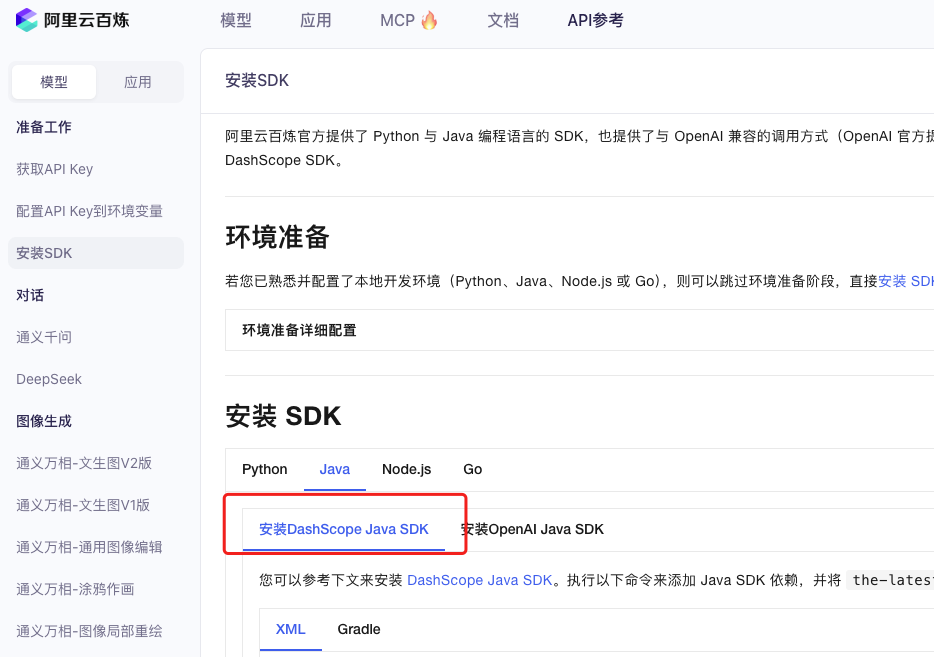
业务系统对接大模型的基础方案:架构设计与关键步骤
业务系统对接大模型:架构设计与关键步骤 在当今数字化转型的浪潮中,大语言模型(LLM)已成为企业提升业务效率和创新能力的关键技术之一。将大模型集成到业务系统中,不仅可以优化用户体验,还能为业务决策提供…...
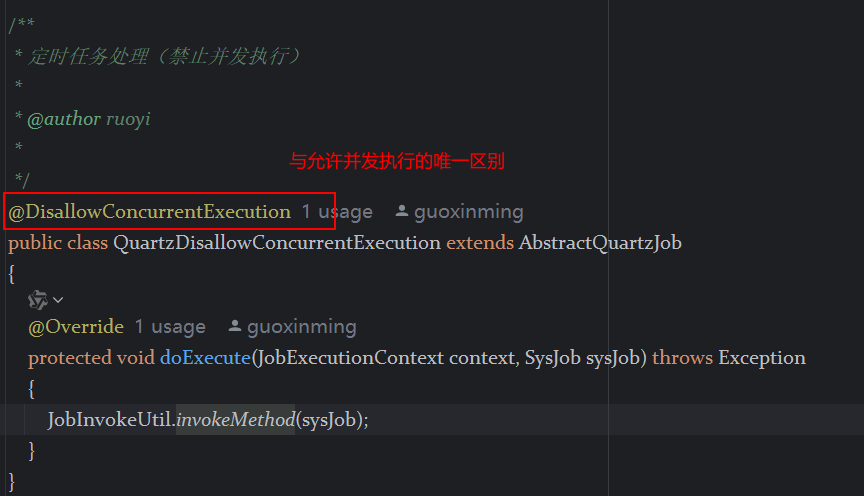
定时器任务——若依源码分析
分析util包下面的工具类schedule utils: ScheduleUtils 是若依中用于与 Quartz 框架交互的工具类,封装了定时任务的 创建、更新、暂停、删除等核心逻辑。 createScheduleJob createScheduleJob 用于将任务注册到 Quartz,先构建任务的 JobD…...

转转集团旗下首家二手多品类循环仓店“超级转转”开业
6月9日,国内领先的循环经济企业转转集团旗下首家二手多品类循环仓店“超级转转”正式开业。 转转集团创始人兼CEO黄炜、转转循环时尚发起人朱珠、转转集团COO兼红布林CEO胡伟琨、王府井集团副总裁祝捷等出席了开业剪彩仪式。 据「TMT星球」了解,“超级…...

QT3D学习笔记——圆台、圆锥
类名作用Qt3DWindow3D渲染窗口容器QEntity场景中的实体(对象或容器)QCamera控制观察视角QPointLight点光源QConeMesh圆锥几何网格QTransform控制实体的位置/旋转/缩放QPhongMaterialPhong光照材质(定义颜色、反光等)QFirstPersonC…...

音视频——I2S 协议详解
I2S 协议详解 I2S (Inter-IC Sound) 协议是一种串行总线协议,专门用于在数字音频设备之间传输数字音频数据。它由飞利浦(Philips)公司开发,以其简单、高效和广泛的兼容性而闻名。 1. 信号线 I2S 协议通常使用三根或四根信号线&a…...

安全突围:重塑内生安全体系:齐向东在2025年BCS大会的演讲
文章目录 前言第一部分:体系力量是突围之钥第一重困境是体系思想落地不畅。第二重困境是大小体系融合瓶颈。第三重困境是“小体系”运营梗阻。 第二部分:体系矛盾是突围之障一是数据孤岛的障碍。二是投入不足的障碍。三是新旧兼容难的障碍。 第三部分&am…...

JavaScript 数据类型详解
JavaScript 数据类型详解 JavaScript 数据类型分为 原始类型(Primitive) 和 对象类型(Object) 两大类,共 8 种(ES11): 一、原始类型(7种) 1. undefined 定…...
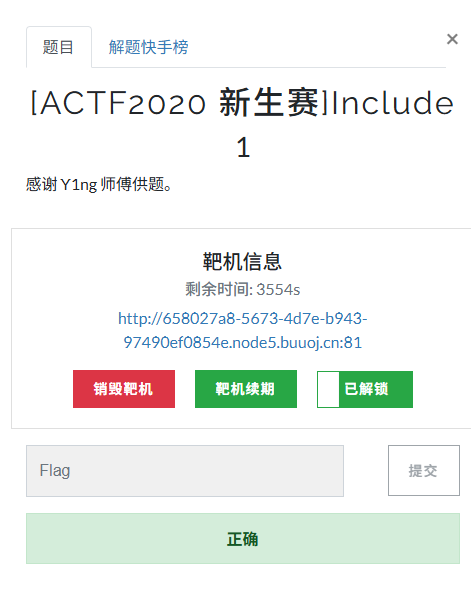
[ACTF2020 新生赛]Include 1(php://filter伪协议)
题目 做法 启动靶机,点进去 点进去 查看URL,有 ?fileflag.php说明存在文件包含,原理是php://filter 协议 当它与包含函数结合时,php://filter流会被当作php文件执行。 用php://filter加编码,能让PHP把文件内容…...

BLEU评分:机器翻译质量评估的黄金标准
BLEU评分:机器翻译质量评估的黄金标准 1. 引言 在自然语言处理(NLP)领域,衡量一个机器翻译模型的性能至关重要。BLEU (Bilingual Evaluation Understudy) 作为一种自动化评估指标,自2002年由IBM的Kishore Papineni等人提出以来,…...

在鸿蒙HarmonyOS 5中使用DevEco Studio实现指南针功能
指南针功能是许多位置服务应用的基础功能之一。下面我将详细介绍如何在HarmonyOS 5中使用DevEco Studio实现指南针功能。 1. 开发环境准备 确保已安装DevEco Studio 3.1或更高版本确保项目使用的是HarmonyOS 5.0 SDK在项目的module.json5中配置必要的权限 2. 权限配置 在mo…...
